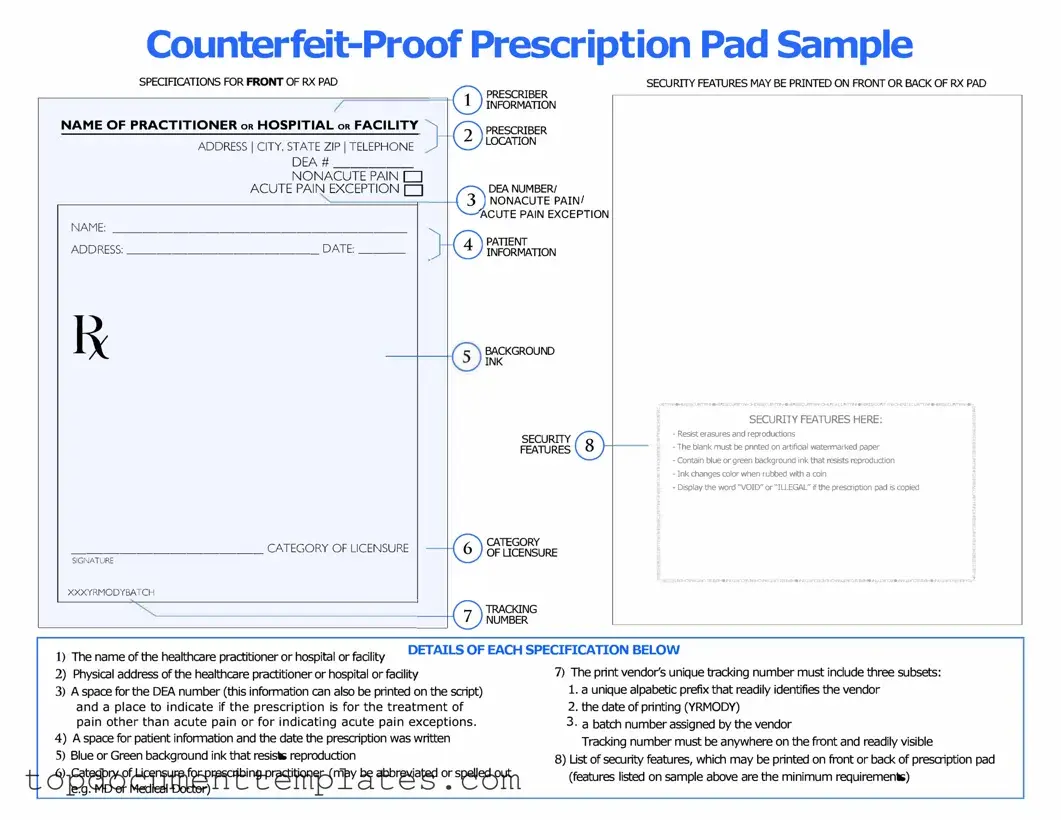The Prescription Pad form plays a crucial role in the healthcare system, serving as a vital tool for healthcare providers to prescribe medications to patients. This form typically includes essential information such as the patient's name, date of birth, and contact details, ensuring accurate identification. Additionally, it requires the prescribing physician's name, contact information, and signature, which authenticate the prescription. The form also outlines the specific medication, dosage, and instructions for use, providing clarity for both the patient and the pharmacist. Furthermore, it may include sections for refills and any special instructions, which help to ensure that the patient receives the correct medication in a timely manner. Understanding the components of the Prescription Pad form is essential for both healthcare professionals and patients, as it facilitates effective communication and promotes safe medication practices.
